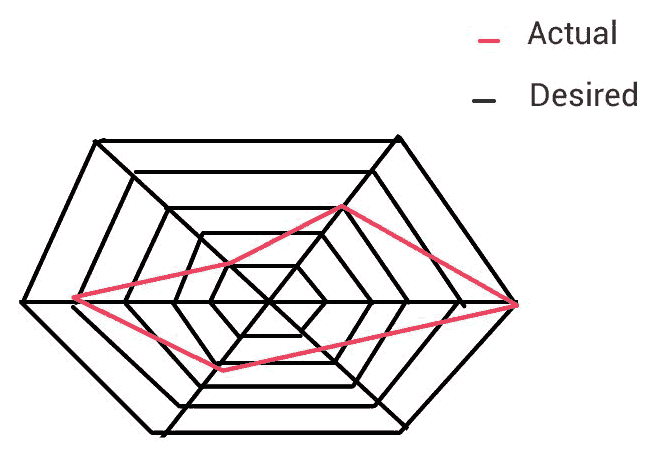Gap Analysis is a technique used by businesses to analyze the gaps and steps to be taken for moving the business from the current state to a desired state. It is a simple and logical tool and finds its application in many places. It is the basis of any problem solving, improvement projects, business scaling up, Root Cause Analysis etc.
Some of the places where it finds its application are:
- Problem Solving in day-to-day Operations: To improve the daily outcomes to meet the targeted levels of performance
- Metrics Management: To identify the gaps in the process and reasons why the metric performance is below the target
- Project Performance management: To analyze the reasons for lag in completion rate of projects and increase in the actual cost against budgeted cost.
- Organization Goal realization review: To identify the optimal level of performance with the given resources and opportunities not utilized with the given cost and resources.
- Annual review: To review the reasons for the gap in goal and actual yearly performance
- Customer Satisfaction review: To benchmark with a competitive product/market leader and assess the gaps or dissatisfaction reasons
- IT Software testing and development: To identify the difference between the desired /intended requirement against the actual design or software
And many more…
The below picture is an example of Spider chart representing the Gap between the targeted and actual performance of a process gains various parameters. The six diverging lines represent the Six parameters. The concentric black lines represent the targeted levels at each phase over a period of time. The red line indicates the actual performance. The levels in black can be named Level 1,2,..5. The actual performance can be measured against these levels for a standard interpretation.

How to Perform a Gap Analysis?
- Identify the Scope of business/Process/Metric/Project
- Identify the Future State/ Desired state of business Objectively and quantitatively
- Break down the goals into small measureable units
- Take into account and review the current state and actual performance
- With the help of SMEs and required stakeholders, review the Gap between actual and desired state of performance
- List down the steps to close the Gaps
- Implement the Solutions.
